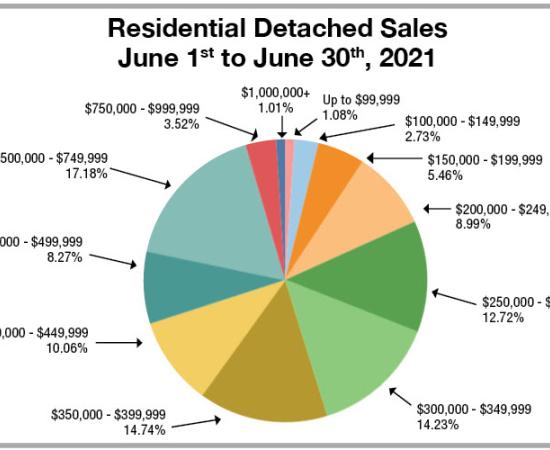By Peter Squire
One of the strengths of the Winnipeg Metropolitan Region market has — and continues to be — its affordability, especially in relation to other markets across the country.
Reinforcing this point is the RBC Housing Trends and Affordability Report that was just released for this quarter. Compiled since 1985, the RBC Housing Affordability Measure is based on the costs of owning a detached bungalow at market value, while also presenting alternative housing types such as standard two storey homes and condominium apartments.
A higher affordability measure means the more difficult it is to afford a home in any given market. If, for example, the reading is 53.3 %, as it was in the last quarter of 2017 for Canada, it takes that same percentage of median pre-tax household income to cover home ownership costs, including mortgage payments (principle and interest), property taxes and utilities, based on these various property types.
As is the case in our local market, where single-detached homes and condominiums represent 85% of total MLS® sales, with other markets sharing similarly high percentages, these two main property types are specifically tracked in the RBC report.
So how does Winnipeg area stack up compared to 13 other major urban markets in Canada, and Canada as a whole? Very well, it turns out! In all measures, which include single-family detached, condominium apartments and the aggregate of all housing types, our city rates among the lowest of all markets.
Based on the fourth quarter 2017, single-family is the highest at 31.8%, and while it did edge up 1.5% year-over-year, it is not far off its long-term average since 1985 of 30.4%. Condominium apartments were at 22.8%. This is only up 0.2% year-over-year and the same minimal increase over the 1985 long term average of 22.6%. Finally, the aggregate of all categories shows Winnipeg at 30.6% in Q4 2017, a modest increase of 0.4% compared to the same quarter a year ago, and only 1.5% above the long-term average of 29.1%.
Now compare Winnipeg with a market such as Victoria, where its cost of home ownership reached record-high levels at the end of 2017. Tight market conditions there — with demand overwhelming supply — resulted in a rise of 6.5 percentage points in 2017 to 61.6%, placing it well above its long-term average of 44.5%. Markets such as Toronto and Vancouver were even higher at 75.1% and 85.2% respectively. Even Calgary, which has been more subdued in the last few years, had a year-over-year increase of 1.6% to end 2017 at 42.1%.
In fairness to other cities, many are in line with Winnipeg, and some are even lower, such as Saint John at 25.4%, St. John’s at 27.1% and Edmonton at 27.7%.
Given current concerns with mortgage rates on an upward trend this year and into 2019 (RBC in this report expects the Bank of Canada to hike its overnight rate a full percentage point to 2.25% by the first half of 2019) coupled with a tougher qualifying environment in general, there is no question that having a lower affordability measure now will help cushion higher rates to come.
Article compliments of WinnipegREALTORS®



